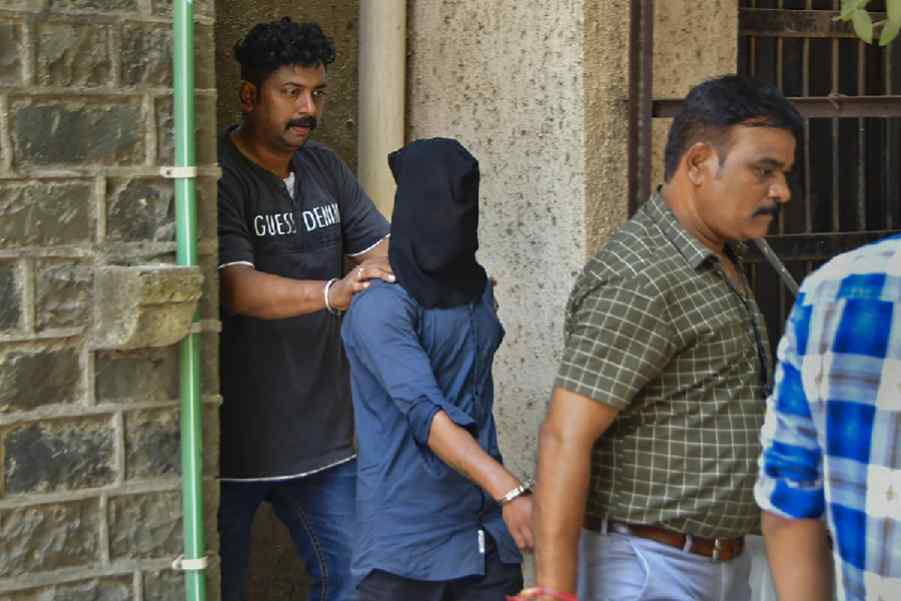 |
| (From left) Kanchan Datta, Nirvik Singh and Ram Ray pose for the t2 camera at Fortune Select Loudon |
On Saturday evening, the Advertising Club Calcutta inducted Ram Ray — a veteran of 51 years and the city’s best-known adman — and city boy Nirvik Singh — now chairman and CEO of Grey Group Asia Pacific and heading it in 17 countries — into its Hall of Fame. Before that, Kanchan Datta, president, Advertising Club Calcutta, discussed and dissected the industry then and now with the two, just for t2.
Kanchan: How does it feel to be honoured by your city?
Nirvik: Any kind of honour feels good, especially when it comes from the city you grew up and started working in. It’s the oldest Advertising Club in India and I feel very touched and humbled. This is my first Hall of Fame, but I hope that isn’t a signal I should retire! (Laughs)
Ram: I really appreciate that it’s coming from the Advertising Club Calcutta … a club that I have valued a lot in the past and continue to do so. I’ve been in advertising for 51 years and a member of the Advertising Club for at least 45-46 years.
Kanchan: What difference, if any, do you see in advertising communication in India vis-à-vis other South-East Asian countries?
Nirvik: Unfortunately, over the last year or so, our economy hasn’t done well. There are other parts of Asia … Indonesia, Philippines and China that are doing better. I think the approach to technology in other markets is different from that in India and that difference is reflected in their advertising communication.
Kanchan: What are the challenges facing the advertising industry in India today, and especially Calcutta?
Ram: I don’t think the challenges are very different from those in any other market. New technology and newer spaces have sprung up. Essentially, advertising is not only about understanding the world inside us, but also around us. When we begin to understand both, we are able to connect to the consumer better.
Kanchan: But today, Bengali as a language has fallen from grace and isn’t used as much as a language of communication. Is that a big challenge for advertising in Calcutta?
Ram: On the contrary, Bengali advertising, in my opinion, has actually improved. There was a time I could say, without bragging too much, that there were only a few agencies, including mine (Response), where you could see good Bengali advertising. But today, I see it coming from a large number of agencies, including some good work by Grey in Bangladesh. They have been winning these Bengali advertising awards year after year. But yes, coming to your question, it’s a challenge not only for the advertising industry, but also for the media players. Who’s going to read Bengali newspapers? The Bengali-speaking market is not a sunrise industry anymore. The total Bengali-speaking population of the world is 225 million, one-third of which is settled abroad. Bengalis outside like to consume Bengali things, whether it is music or literature. So, it is at once an opportunity and a problem… a danger.
Kanchan: Do you think iconic names in advertising have become extinct today?
Nirvik: I wouldn’t say that … there are many creative people around. But I think the craftsmanship which we saw earlier has become less. It may be due to time pressure or it may be because people don’t concentrate on details that much anymore … it could be a reflection of that. I think that ‘craft’ needs to come back.
Kanchan: Nirvik, you’ve been a jury member at Cannes. Why do you think Indian advertising doesn’t win as many awards as it can?
Nirvik: First of all, I wasn’t judging the creative part… I was judging the effectiveness of an ad. India, actually, had some strong entries. But this was the first year of the effectiveness awards and there were a lot of learnings. I think somewhere the skill of submitting the entries from India left a lot to be desired. But, in fact, I think India had a head start in Cannes over many other countries.
Kanchan: Everyone’s screaming digital nowadays. How relevant is traditional advertising today?
Nirvik: I don’t make the distinction. I think we’ve got obsessed with the words ‘digital’ and ‘traditional’. What’s important is being able to deliver that which will connect with the consumer. What matters at the end of the day is good brand recall.
Our business has definitely changed from where we were 20 years ago and a lot of it is due to technology, but finally it all comes to down to great insight and creativity in connecting with the consumer. I think digital is pervasive… I don’t make that distinction. There was a time when all advertising was on radio… and then came television and now is the computer, the Internet and the mobile. The world does change every 30-40 years… maybe this time, the rate of adoption has been faster.
Kanchan: How is that the Bengali shines outside, but becomes unproductive in Calcutta?
Nirvik: (Laughs) I don’t think I’m qualified to answer that! But I think it’s an unfair thing to say. It’s just a perception … people here work just as hard. Till the time we don’t whip that perception, we will find it difficult to get clients and industry here. The ad industry is a subset of clients and if clients don’t come here, then we will suffer. To me, that’s a bigger issue than the question of talent pool. There were a lot of big brands that used to come out of Calcutta and it’s time to bring them back.
Ram: I feel the talent in Calcutta can produce world-class work, if it wants to. In my own agency, I have seen how when someone is told that an ad is for The New York Times, the quality of work dramatically improves!
Kanchan: Calcutta is relegated to being an advertising backwater. What would you do to change it?
Nirvik: In terms of flying hours, Calcutta is closest to South-East Asia. We need to position Calcutta as the gateway to India for countries in South-East Asia. But I think we need to ask ourselves honestly: ‘When was the last time Calcutta went and marketed itself?’ There are so many amazing articles written about Calcutta… how people get nostalgic about growing up out here, about living here. But there hasn’t been a concentrated effort to market it. I live in Singapore which is probably the most marketed country in the world.
Ram: Singapore is an interesting example of marketing preceding the product. Singapore has been marketing itself much before it became the real Singapore. Calcutta’s case is exactly the opposite. But these are issues not within the purview of our discussion here. These are much larger issues. Nirvik rightly said we are a subset of the industry.
Kanchan: Why are youngsters losing interest in advertising as a profession?
Ram: To be harsh, there is only one tone that defines most youth today: how to get higher faster. I find applications for the job of copywriters suffering in terms of language. When you ask them, you are told: ‘Sir, I am not interested in language; I am interested in ideas.’ Shortcut, really, has become the norm. Today, achievement has become more important than contribution. I’m not saying that’s right or wrong … I personally don’t like it because I feel it creates lesser human beings.
Nirvik: I feel you can say that people are not joining advertising if you think only in terms of its narrow definition. But anyone who joins Facebook or Google, is actually joining advertising. I think you have to redefine the definition of advertising. There may not be many who are joining client servicing or copywriting, but there are 50 kids setting up their social media companies or digital shops.
Ram: Stop calling it advertising … start calling it communication.
Kanchan: Who has been your inspiration in life and work?
Nirvik: For me, Ravi Gupta (former CEO of Trikaya Grey) was always an inspiration. I lost my parents when I was young and he was not only a father figure, but someone who constantly pushed me to challenge the status quo.
Ram: I have hero-worshipped none, but there are some people who have inspired me. One is Subhas Ghoshal and the other is Steve Jobs, both of whom I have met. Both were dreamers and yet very practical. I go back to their writings from time to time.
Priyanka Roy of t2 sat in on the chat
Pictures: Rashbehari Das and B. Halder










